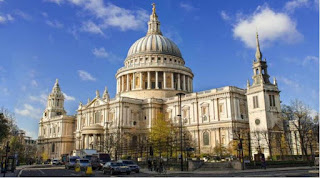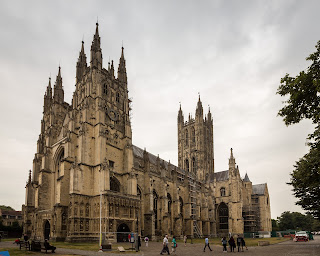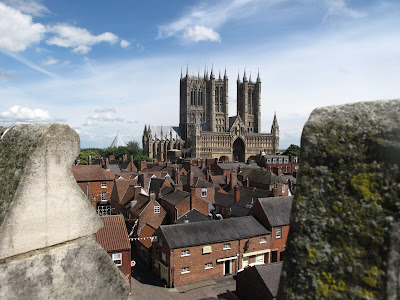Musical memories from the heart of London
Three days in and we'd clocked up the 55.3 miles required to take us to St. Paul's.
Here's a little piece about our most recent stop by our Director of Music, Derek Clark.
St Paul's is London's Cathedral, being the seat of the Bishop of London. The present building, the masterpiece of the architect Sir Christopher Wren, dates from the 1670s and is the fifth church dedicated to St Paul to be built on this site (the first dated from 674AD). All four of the previous buildings were destroyed by fire - indeed, it was as a result of the general rebuilding following the Great Fire of London in 1666 that Wren was awarded the commission for a new cathedral. All that remains of any of the older buildings is a memorial effigy (now situated in the South Choir Aisle) of the English poet and mystic John Donne, who was Dean of the cathedral from 1621 until his death ten years later.
The most conspicuous part of the building is of course the Dome, which still dominates the London skyline in spite of today's much taller office buildings. It became a symbol of hope during the Second World War due to the famous pictures which showed it still standing proudly among the smoke and general desolation caused by the Blitz.
The size and splendour of the Cathedral's interior has made it eminently suitable for national thanksgiving services, leading to it being dubbed 'the nation's parish church'.
The interior of the building has several notable features, including rich mosaic decorations on the inside of the Dome, the famous Whispering Gallery, the wood engravings on the choir stalls by the master carver, Grinling Gibbons, and ornate sanctuary screen by Jean Tijou and Holman Hunt's well known painting, 'The Light of the World'.
Musically speaking, a long list of British composers have had long associations with the cathedral. In centuries past, it's organists have included Maurice Green, Thomas Attwood (a pupil of Mozart, and composer of one of our choir's favourite anthems, 'Teach me, O Lord, the way of thy statutes'), and Sir John Stainer, of 'Crucifixion' fame. Jeremiah Clarke (composer of the famous 'Trumpet voluntary'), Sir Arthur Sullivan and Sir Hubert Parry are buried there, as are the poets Walter de la Mare and John Donne, the sculptor Henry Moore, and other eminent figures in UK history, such as the Duke of Wellington and Admiral Lord Nelson. Christopher Wren is also buried in the crypt, a marble tablet above his tomb bearing the famous inscription: 'Si monumentum requiris, circumspice' (if you require a memorial, look around).
All these aspects have made the building a favourite tourist destination, but above all, it remains a superlative place of worship. Even just sitting quietly looking at the fabric of the building, all made to and for the glory of God, can become a special spiritual experience, and on the few occasions when I have been part of a worshipping congregation, to hear the choir, the organ and the sounds of the liturgy echoing around that vast space, was a truly awesome experience - in the literal meaning of that much over-used word. I also attended a performance of Britten's 'War Requiem' there, and although much of the detail was lost in the very reverberant acoustic, I suspect that the climax of the 'Dies Irae' has seldom sounded quite as terrifying as it did on that occasion, and I shall never forget the sound of Heather Harper's voice as she began the 'Lachrymosa'; one of those very special moments when, in spite of the size of the building, and the large number of people in it, you felt as though you could have heard a pin drop.






Comments
Post a Comment